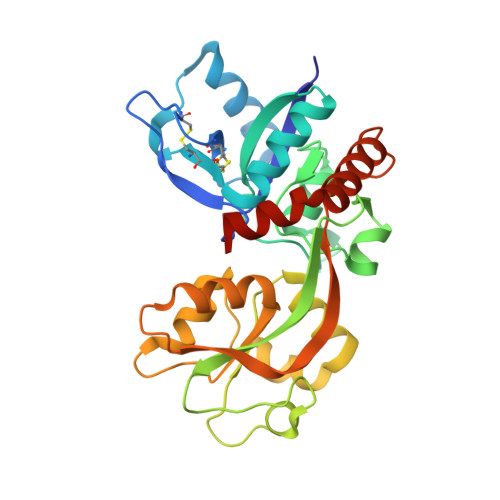Molecular mechanism of ligand recognition by NR3 subtype glutamate receptors.
Yao, Y., Harrison, C.B., Freddolino, P.L., Schulten, K., Mayer, M.L.(2008) EMBO J 27: 2158-2170
- PubMed: 18636091
- DOI: https://doi.org/10.1038/emboj.2008.140
- Primary Citation of Related Structures:
2RC7, 2RC8, 2RC9, 2RCA, 2RCB - PubMed Abstract:
NR3 subtype glutamate receptors have a unique developmental expression profile, but are the least well-characterized members of the NMDA receptor gene family, which have key roles in synaptic plasticity and brain development. Using ligand binding assays, crystallographic analysis, and all atom MD simulations, we investigate mechanisms underlying the binding by NR3A and NR3B of glycine and D-serine, which are candidate neurotransmitters for NMDA receptors containing NR3 subunits. The ligand binding domains of both NR3 subunits adopt a similar extent of domain closure as found in the corresponding NR1 complexes, but have a unique loop 1 structure distinct from that in all other glutamate receptor ion channels. Within their ligand binding pockets, NR3A and NR3B have strikingly different hydrogen bonding networks and solvent structures from those found in NR1, and fail to undergo a conformational rearrangement observed in NR1 upon binding the partial agonist ACPC. MD simulations revealed numerous interdomain contacts, which stabilize the agonist-bound closed-cleft conformation, and a novel twisting motion for the loop 1 helix that is unique in NR3 subunits.
Organizational Affiliation:
Laboratory of Cellular and Molecular Neurophysiology, Porter Neuroscience Research Center, NICHD, NIH, DHHS, Bethesda, MD, USA.
















